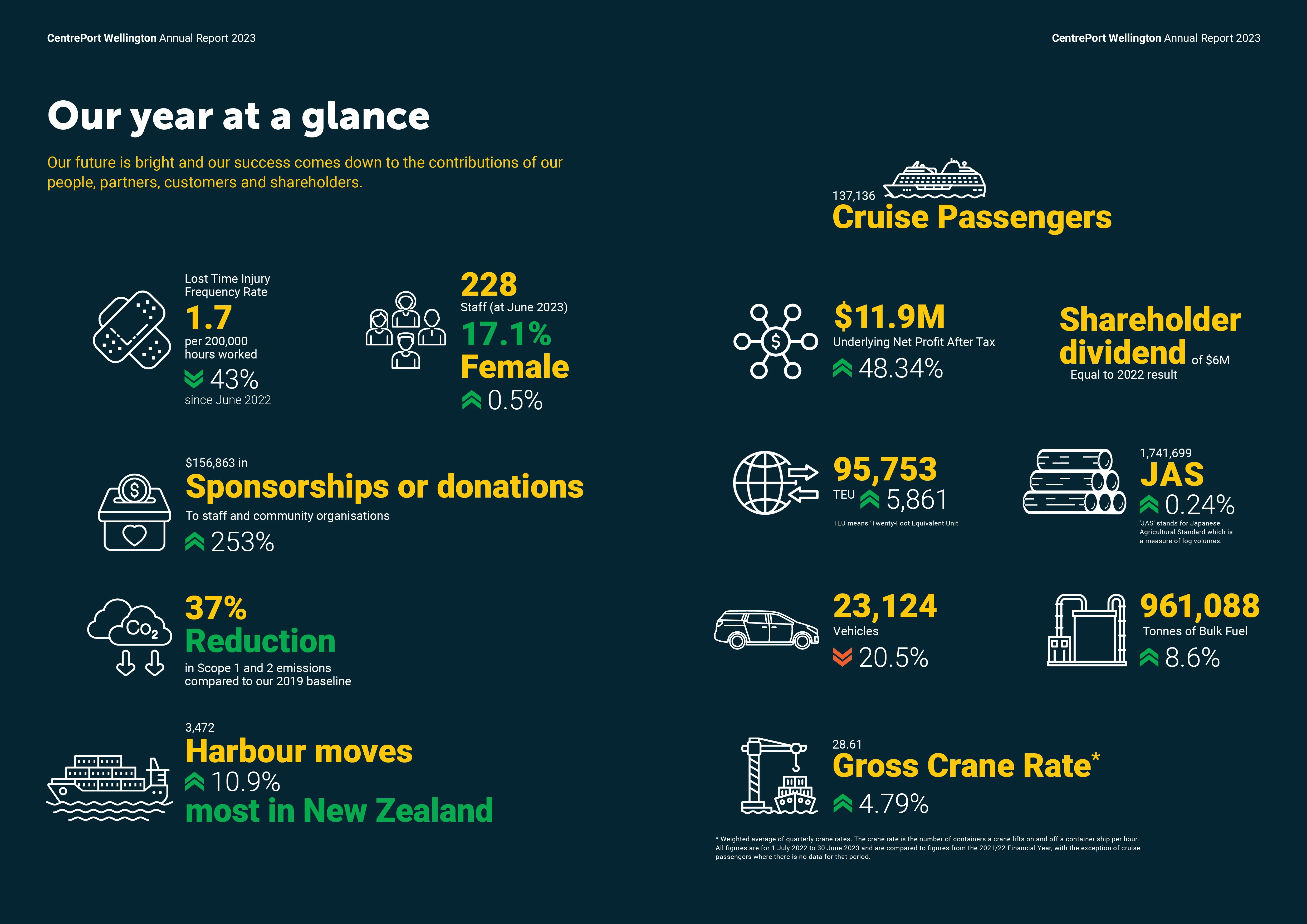News
- Home
- CentrePort well positioned for the future
CentrePort well positioned for the future
31 October 2023
New Zealand’s busiest port by ship movements has reported a strong result for the year ended 30 June 2023 with an underlying net profit after tax of $11.9m, a 48% increase on the prior year’s result of $8m.
This result delivers on CentrePort’s purpose to be at the heart of connecting New Zealand’s supply chain and transport system, underpinned by long-term investments in resilience and strategic partnerships.
With increased revenue and a focus on energy transformation to support lower emissions, CentrePort says it’s well positioned for the future, with additional capacity that can provide greater support to New Zealand’s supply chain.
CentrePort’s Chief Executive Anthony Delaney says the port has a strong and capable team and business that’s growing in a competitive and dynamic market.
“The port’s achievements across the last 12 months are a testament to the work the port and its people have done to increase efficiency and capacity.”
Key highlights include:
- 95,753 TEU (up 7%)
- 961,088 petroleum tonnes (up 8.6%)
- 1,741,699 JAS (up 0.24%)
- 3,472 harbour moves (up 10.9%)
- 61 gross crane rate (up 4.79%)
- 137,136 cruise passengers
- Paying $6m of dividends to shareholders during the year.
Read CentrePort's 2023 Annual Report
Delaney says CentrePort’s focus on productivity, efficiency and a customer-centric approach are critical to its ongoing success.
“Our team of over 200 have worked hard to maintain relationships with our customers and look for long-term solutions that support them. This is something that continues to be recognised in the feedback we receive.”
The port’s focus on efficiency has seen it become one of the most efficient ports in New Zealand with a gross crane rate of 28.61 moves per hour, up 4.79% on the previous financial year’s result, and ending the June 2023 Quarter at 29.55 - the best in New Zealand. The port was also ranked as the most efficient container port in New Zealand and Australia for the World Bank CPPI index for the second consecutive year.
“The good news is that we have room to spare to do more with shippers and shipping lines that can only benefit New Zealand in the long run.”
A key component of how CentrePort expects it will assist shipping lines and the country in future is through action to lower emissions.
“We are moving ahead with plans to build energy resilience and electrify our contribution to New Zealand’s supply chain. We’ve already achieved well over 30% reduction in scope 1 and 2 emissions from our 2019 baseline and see ourselves well on track to reach Net Zero greenhouse gas emissions by 2040.”
Delaney says the establishment of a MicroGrid and Shore Power at the port will not only reduce CentrePort’s operational reliance on non-renewable energy, but also support ships to ‘plug in and switch off’ their engines, reducing their emissions while at port. Solar panel arrays are also due to arrive at the port by mid-2024.
A further contributor to the supply chain is CentrePort’s inland hubs in Whanganui and Marlborough, which can provide flexibility for shippers and customers moving goods to/from the port.
“CentrePort’s freight hub operations offer cargo owners a strong connection to the port through a multi-modal transport network of rail and road. Known as CentreConnect, it supports a more resilient and sustainable supply chain offering for New Zealand, with plans to transition its operation to alternative fuels and technology that will again lower emissions.”
Delaney says there are other highlights across the past 12 months, including the continued focus on the health and safety of CentrePort’s people.
“Our people are the key contributor to our efficiency and productivity. I’m pleased that our continued approach to safety culture and practice has resulted in positive comments from both Maritime NZ and WorkSafe in relation to our operations they observed.”
While Delaney says there is much to celebrate, he acknowledges there are external challenges ahead.
“We can’t ignore the somewhat negative economic outlook and continued market disruption on the horizon, which is agnostic of where you are in the country. However, I’m confident our business will continue to grow, offering solutions to current and future customers while also supporting the Wellington region and New Zealand as a critical element of the supply chain.”
ENDS

